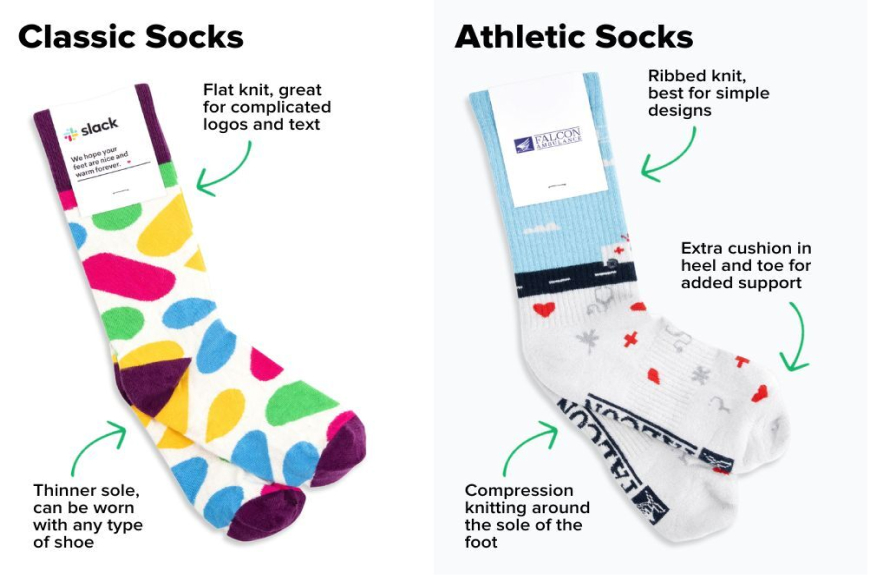Football socks are more than just a part of the uniform; they're an essential component of a player's gear that can significantly impact performance and comfort on the field. Whether you're a seasoned pro or just starting out, mastering the art of wearing football socks correctly can make a world of difference in your game. In this post, we'll explore the techniques and tips to help you wear your football socks like a true professional.
Choose the Right Socks
The foundation of wearing football socks like a pro starts with selecting the right pair. Custom socks designed specifically for football offer the best fit and performance. Look for socks made from moisture-wicking materials that keep your feet dry and comfortable throughout the game. The right socks should also provide adequate cushioning and support in key areas like the heel and ball of the foot.
Proper Sock Height
One of the most noticeable aspects of a footballer's appearance is the height of their socks. Professional players typically wear their socks just below the knee. This height is not just for show; it provides protection for the shins and helps keep shin guards in place. To achieve this look, pull your socks up fully and then fold the top down slightly to create a neat, even line just below the knee.
Securing Shin Guards
Shin guards are a crucial piece of protective equipment, and your socks play a vital role in keeping them in place. Before pulling up your socks, position your shin guards correctly on your legs. Then, carefully pull your socks over the shin guards, ensuring they're snug but not too tight. Some players prefer to use grip socks underneath their regular socks for extra security and to prevent slipping inside their cleats.
The Stirrup Technique
For players looking to emulate the classic professional look, the stirrup technique is a go-to method. This involves wearing a pair of thin, knee-high socks underneath your regular football socks. The thin socks are cut at the foot, creating a stirrup that goes under your heel. This technique not only looks sharp but also helps keep your socks in place during intense play.
Taping for Extra Security
Many professional players use tape to keep their socks up and shin guards secure. To do this, wrap athletic tape around the top of your socks just below the knee. Be careful not to tape too tightly, as this can restrict blood flow. Some players also use a small strip of tape at the bottom of the shin guard for added stability.
Dealing with Tight Socks
If you find your football socks too tight, there are a few tricks you can try. Gently stretching the socks before wearing them can help improve flexibility. You can also try wearing them inside out for a looser fit around the calf area. Remember, socks that are too tight can impede circulation and affect your performance on the field.
Maintaining Your Socks
To ensure your football socks continue to look and perform their best, proper care is essential. Always wash them according to the manufacturer's instructions, typically in cold water to prevent shrinkage. Avoid using fabric softeners, as these can degrade the moisture-wicking properties of the socks. Air-drying is often the best method to maintain the shape and elasticity of your socks.
Personalization and Team Identity
Many teams and players opt for personalized socks to showcase team colors or individual style. When wearing custom socks, make sure they comply with league regulations. Personalized socks can boost team morale and create a unified look on the field.
Wrapping Up
Wearing football socks like a pro is a combination of function and style. By following these tips and techniques, you'll not only look the part but also enjoy improved comfort and performance on the pitch. Remember, practice makes perfect, so don't be afraid to experiment with different methods to find what works best for you. With the right approach, your football socks will become an asset to your game, rather than just another piece of equipment.


